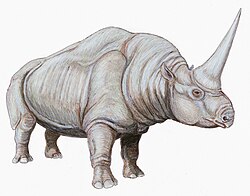| Tapirus | |
|---|---|
 | |
| South American tapir, a type species of Tapirus | |
| Scientific classification | |
| Kingdom: | Animalia |
| Phylum: | Chordata |
| Class: | Mammalia |
| Order: | Perissodactyla |
| Family: | Tapiridae |
| Genus: | Tapirus Brisson, 1762 [1] |
| Type species | |
| Hippopotamus terrestris (=today is Tapirus terrestris) | |
| Species | |
For extinct species, see text | |
| Synonyms [1] | |
About 12
| |
Tapirus is a genus of tapir which contains the living tapir species. The Malayan tapir is usually included in Tapirus as well, although some authorities have moved it into its own genus, Acrocodia. [2]












